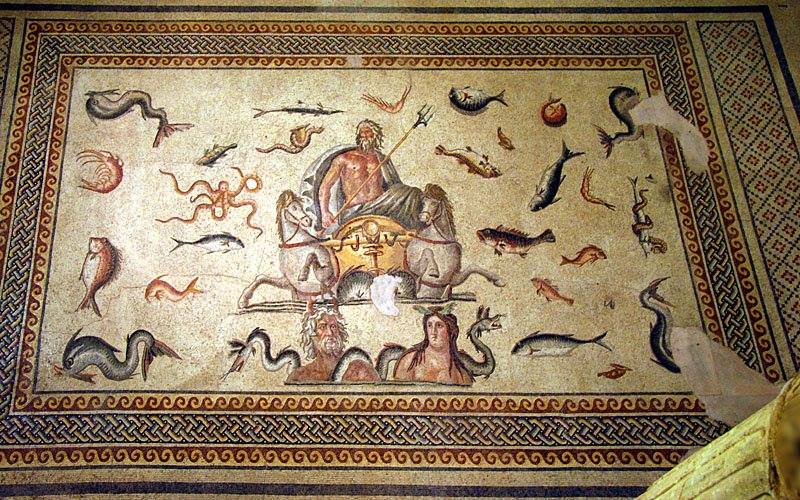The book that explains ancient stages is A Dictionary of Greek and Roman Antiquities by Sir William Smith and Charles Anthon, which, dating from 1857, is a free-to-download Google Book.
Click here for the part where is explained how a curtain apparently covered the painted scene on the back wall that closed the stage from behind. The curtain was let down and rolled up on a roller beneath the stage, thus discovering the scene from the top down.
However, the translators all seem to agree that Ovid is describing a painted curtain being raised to display figures depicted on it, in which case we are to imagine how the heads would appear first, followed by the bodies, then the feet. Anderson says the curtain would rise at the end of an act or of an entire play - in which case, Ovid might be playing with the idea that Cadmus, being pointedly excluded from the warriors' fight, is like a spectator at a play. But unlike that spectator, for whom the curtain rises at the end, this "curtain" of warriors rises at the beginning of his life's drama.
Here's More's version:
as he plowed the land,
took care to scatter in the furrowed soil
the dragon's teeth; a seed to raise up man.
'Tis marvelous but true, when this was done
the clods began to move. A spear-point first
appeared above the furrows, followed next
by helmet-covered heads, nodding their cones;
their shoulders, breasts and arms weighted with spears;
and largely grew the shielded crop of men.—
so is it in the joyful theaters
when the gay curtains, rolling from the floor,
are upward drawn until the scene is shown,—
it seems as if the figures rise to view:
first we behold their faces, then we see
their bodies, and their forms by slow degrees
appear before us on the painted cloth.

No comments:
Post a Comment